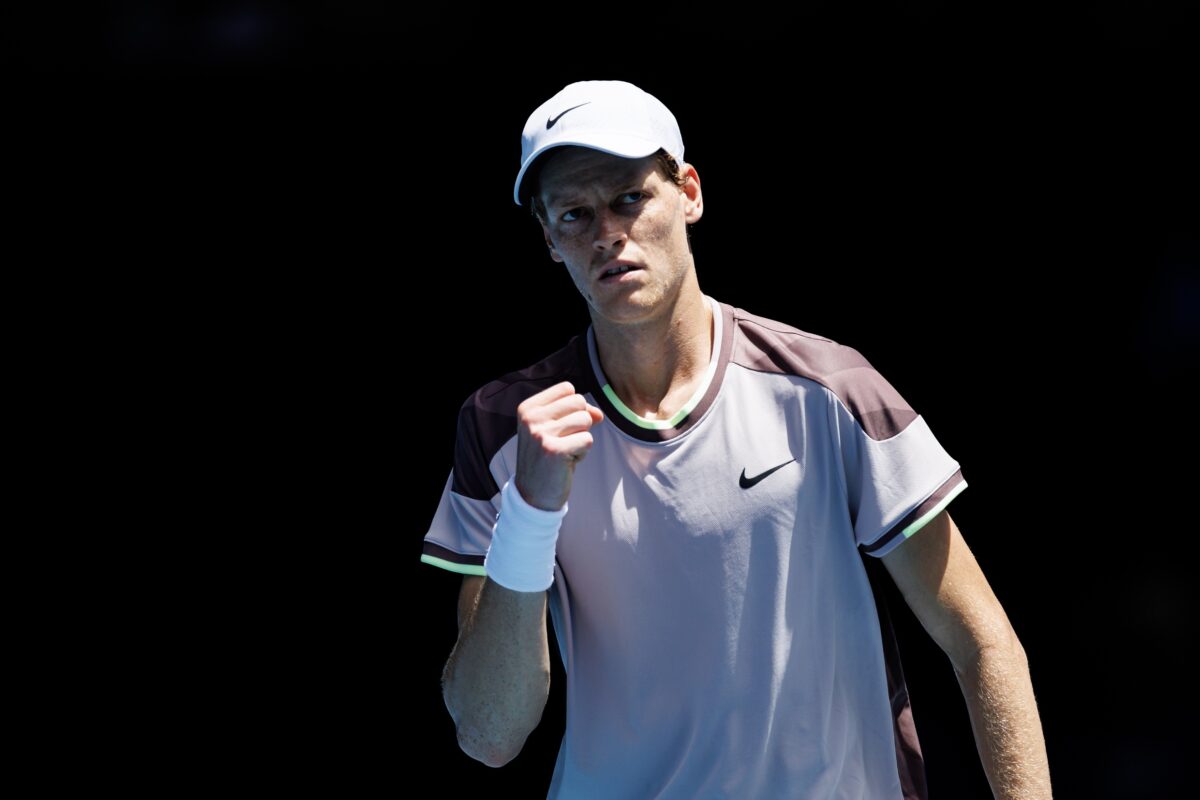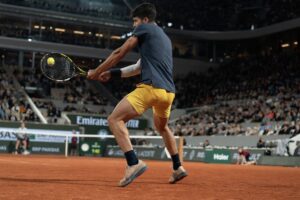If the Davis Cup and Billie Jean King Cup really are the World Cups of Tennis, as they proudly proclaim, then it was impossible to see the Netherlands reach the Davis Cup final and not think of total football, the revolutionary style of play with which the Dutch reached the 1974 World Cup final in the world’s most popular sport. Half a century on, it is possible that Italy have invented total tennis, or at the very least total team tennis, as they have been crowned champions in both the Davis and BJK Cups, and in the process confirmed that they are now the greatest tennis nation on earth.
Total Tennis Is About Substance, Not Style
Any comparison between Dutch total football of the 1970s and Italian total tennis of the 2020s must acknowledge, at the outset, a fundamental difference between the two. Total football was a genuinely revolutionary style of football, whereby every player in the team could theoretically (and often in practice) play in any other position in the team, such that the centre-forward could play centre-back and vice versa. Indeed, it was probably the single most important tactical development in football history.
By contrast, if Italy are now playing total tennis then it is less about style than substance, the substance being enormous amounts of silverware. Italy has not reinvented how tennis is played, as the Dutch reinvented football, but they have perhaps perfected it, in terms of winning the major individual and team prizes in the sport simultaneously. For all the undoubted brilliance of Johan Cruyff and co. in the 1970s, especially at the 1974 World Cup in the then West Germany, they never won the biggest prize in football, as they narrowly lost the 1974 final to the tournament hosts. By complete contrast, Italian tennis has just won two World Cups–the Davis Cup and the BJK Cup–within a matter of days.
In Any Sport, Great Players Lead The Way…
In any sport, great players lead the way, galvanizing the teams they play in and the nations they represent. The Dutch total football of the 1970s was led by the great Johan Cruyff, the genius attacking midfielder (or No.10 in modern football parlance) who inspired other fine players, notably Johan Neeskens, his more defensively-minded midfield partner, to follow his lead. And so they did, first at club level, as their Ajax team won three European Cups (the forerunner of the Champions League) in succession, before going so close to triumphing at international level at the World Cup.
Similarly, The Tennaissance – the remarkable rise of Italian tennis in recent years – has been spearheaded by Jannik Sinner, a genuinely generational player who first emerged by winning the 2019 Next Gen event for the best young players in men’s tennis and within five years has become the most dominant player in the sport. Indeed, his extraordinary consistency has given him the edge, for the time being at least, over the more spectacular fireworks of Carlos Alcatraz.
Sinner’s consistent brilliance was evident again in the Davis Cup final, where he withstood everything that Tallon Griekspoor of The Netherlands could throw at him during the second and decisive singles rubber, before promptly throwing it back at him with even greater power and infinitely greater subtlety. Griekspoor played superbly, Sinner did not play at his best (certainly in comparison with his miraculous performances in Malaga last year), and yet the result was never really in doubt. Ultimately, Sinner comfortably won the match in straight sets, as he has won his last 13 matches (which have included facing the world’s best at the ATP Tour Finals), to build on Matteo Berrettini’s more emotional triumph over Botic van de Zandschulp, and secured Italy another Davis Cup title.
…And Other Fine Players Follow Them
Similarly, the greatest players in any sport encourage and indeed inspire other fine players, especially those of the same nationality, to follow them and raise their levels dramatically. So, just as Cruyff inspired Neeskens, Ruud Krol, Arie Haan and all his other Ajax and Netherlands team-mates to follow him to the top (in club football) and nearly to the top (in international football), so Sinner has inspired other Italian players, both male and female, to raise their games dramatically, and in at least one case exponentially, over the past year.
The effect on Sinner’s male team-mates in Italy’s Davis Cup team may be obvious. Matteo Berrettini, for one, spoke after the Davis Cup final about how he had been determined throughout 2024 to be a playing part of Italy’s Davis Cup team this year after being only a spectator, albeit one on the team bench, at last year’s triumph.
Perhaps less obvious has been Sinner’s effect on Italian women, notably Jasmine Paolini, who drove Italy’s BJK Cup team to success just five days before Italy’s men retained the Davis Cup. However, Paolini has also spoken about how Sinner has raised the whole level of Italian tennis, both male and female, by showing what is possible. For all that Sinner is an outstanding and even outlandish talent, he is also a compatriot who most Italian tennis players have played with or against for the past decade or so. Consequently, to see him succeed so spectacularly over the last 12 months has made major (and Major) success seem far more attainable for other Italian players than it might have done before.
Paolini may not have won two Major Singles titles this year, as Sinner has done. However, she has reached two Major finals, at the French Open and Wimbledon, and in addition to leading Italy to BJK Cup success a year after they came runners-up to Canada, she and her doubles partner (and mentor) Sara Errani won Olympic Gold.
In Team Tennis Especially, The Supporting Cast Are Essential
Italy’s double success in the two premier team events in tennis within a single week has confirmed just how far the nation’s tennis has come and how dominant it now is. Prior to the last five years or so, or before the emergence of Sinner, Italy had a relatively undistinguished history as a tennis nation. On the men’s side, it had only ever had two Major Singles champions before Sinner. And although Italian women had excelled about a decade ago, winning both Major singles titles and Fed Cups (as the BJK Cup was originally called), their success had not really had a hugely galvaniing effect on all tennis players, both male and female, within the country.
A decade or so on, that situation has changed completely. In addition to Sinner, the men’s World No.1, and Paolini, the current/year-end women’s World No.4, there are veritable legions of very good Italian tennis players of both genders, and that was another cornerstone of their double success in the Davis and BJK Cups. Berrettini had replaced Lorenzo Musetti in the singles after Musetti proved again that his game style does not really suit hard courts and perhaps particularly indoor hard courts, and then was instrumental, in both singles and in doubles alongside Sinner, in Italy reaching and winning the final. And almost identically in the BJK Cup, Lucia Bronzetti had replaced Elisabetta Cocciaretto after Cocciaretto had lost her singles match in the quarterfinal against Japan and went on to win both her singles matches in the semifinal and final against Poland and Slovakia respectively.
Beyond even those individuals, there is a considerable number of other Italian players, both male and female, who have made important contributions to the country’s twin team success. Indeed, so strong is Italian men’s tennis in particular that some of those players could not even make the Davis Cup final team. Nevertheless, Berrettini, Sinner and the Italian captain Filippo Volandri were quick and more importantly sincere in thanking Matteo Arnaldi and Flavio Cobolli for winning key qualifying matches earlier in the year, notably in September when Sinner was absent after his US Open triumph. Similarly, although Martina Trevisan did not play for Italy during the BJK Cup finals in 2024, she had been a key member of the 2023 team that reached the final and had played in qualifiers throughout the last 12 months.
The Future Is Bright – The Future is Azzurri
It was the Netherlands themselves who had hoped to outdo their illustrious footballing predecessors by winning a world championship, and they came close by reaching the Davis Cup final. But ultimately it was Italy, on both the men’s and women’s side, who proved that they are the true, spiritual successors to the great Dutch total football team by playing total tennis, or at least total team tennis. Indeed, they outstripped them, because although Dutch total football had a profound effect on how football was played, it did not garner the silverware that it should have done. Italy’s total tennis of the 21st century may not be as stylistically revolutionary as total football, but it has already proven itself to be far more successful.
Main Photo Credit: Mike Frey-USA TODAY Sports






